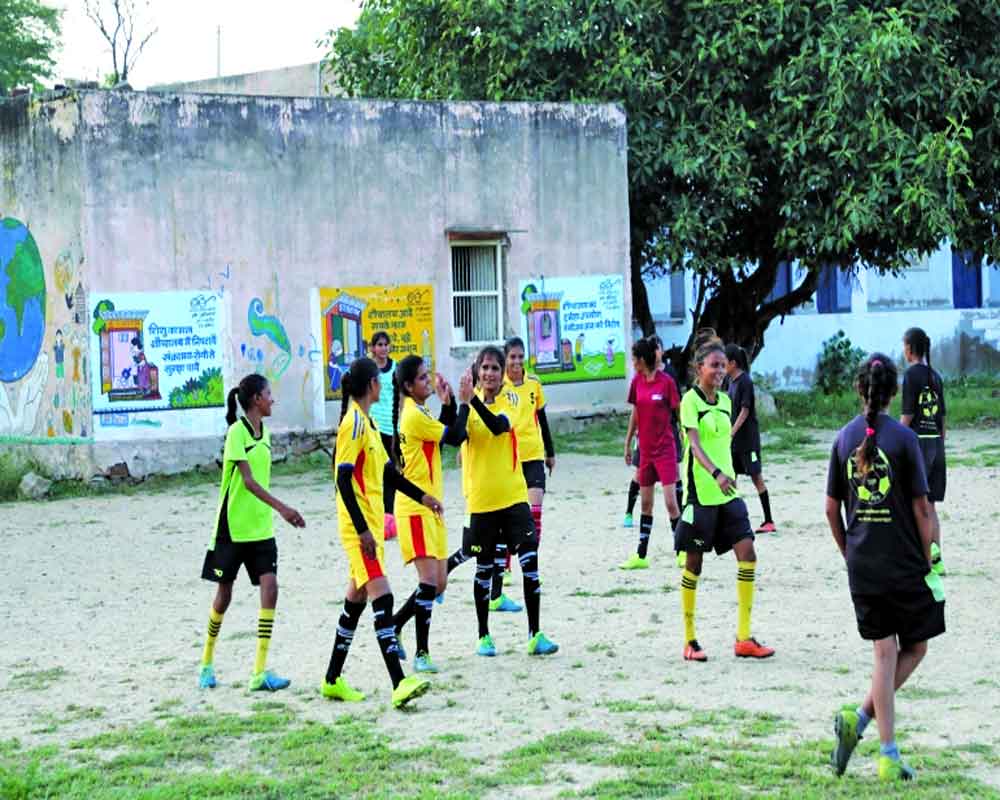Gender bias is prevalent in remote villages of Uttarakhand
Not much attention is given here [Kapkot, Uttarakhand] to girls’ participation in sports. There are many girls in the village, who can bring laurels to Uttarakhand in national and international tournaments if they are given the chances and facilities,” said Mamta and Pooja, a duo from Dhurkot Village in Bageshwar district in Uttarakhand.
Lack of a proper playground with adequate facilities is a major problem in several places in Bageshwar. As a result, youth, especially girls, face a lot of difficulties in practicing and making their careers in sports. Moreover, even with the presence of a ground, girls are barred from using the ground, as playgrounds predominantly become spaces for boys in villages.
Dhurkot Village, which is situated on the banks of the river Saryu, is 25 kms from Bageshwar in Uttarakhand. The population of this village is about 5,000. But being in a hilly area, there is a lack of a playground in the village. Although it affects both boys and girls in developing their skills, boys have the option to travel and access a proper field, whereas girls are not allowed to travel far from their villages to play.
“There is a ground available about three kms away from the village, where boys easily go to practice, but it is not easy for girls to go there every day. The locals do not take this issue very seriously,” said Deepa Devi, an Asha worker from the village.
Echoing similar sentiments, Sita Devi, the village head, said, “The absence of a playground in the village is a big drawback. It has the most negative effect on girls. Not only is their physical development curbed, but their talents are also suppressed. Despite taking this issue to the local administration several times, our effort has not been successful.”
Although schools provide grounds for sports, girls are not encouraged to play or given sufficient time to hone their skills. “The only place where we can practice is our school. But even that right is not with us. We are given the chance to practice only one day prior to the tournaments, whereas boys practice for months,” rued Prema Gariya, a 16-year-old girl from the village.
In India, 29 per cent of women take part in sports in comparison to 42 per cent men, according to a report. A little more than 33 per cent of respondents consider sports like boxing, kabaddi, and weightlifting inappropriate for girls and women. They believe sports are unsafe for girls and that women cannot play at all times. So far, the southern states of India, such as Maharashtra, Tamil Nadu, have shown the highest participation of women in sports and physical activities.
Supporting how women are restricted from playing due to gender inequality, Neelam Grundy, a social worker from Bageshwar, reflected on the effect it has on the holistic development of children. “Sports are imperative in building qualities like leadership, decision-making skills, and teamwork. But without any space to build these qualities or support from families, how can girls inculcate these qualities,” Neelam said.
The notion that sports are more appropriate for men results in all the discrimination against girls. Although we have come a long way in terms of women’s participation in sports globally, there is a need to focus on the remote villages where a horde of talents lies.
(The author is a student of class 12 from Kapkot, Bageshwar: Charkha Features)


























